Frequently Asked Questions
SDGs and India’s Progress So Far
Anshi Beohar*
What are the SDGs?
The Sustainable Development Goals (SDGs) are a comprehensive list of global goals, a blueprint for development detailed in the document ‘Transforming our World: The 2030 Agenda for Sustainable Development.’ It was adopted on September 25, 2015 at the 70th Session of the United Nations General Assembly by the member states. It envisages peace and prosperity for people and the planet, building upon on decades of work by the UN as well as all sectors of the society. This document recognises that ending poverty and other deprivations must go hand-in-hand with strategies that improve health and education, reduce inequality, and spur economic growth – all while tackling climate change and working to preserve our oceans and forests. It lists 17 SDGs and 169 associated targets for integrating social, economic and environmental dimensions of development that came into force with effect from January 1, 2016. These are meant to stimulate action over the next 15 years to create a world where everyone thrives.
The 17 SDGs are:
Goal 1 - End poverty in all its forms everywhere
Goal 2 - End hunger, achieve food security and improved nutrition and promote sustainable agriculture
Goal 3 - Ensure healthy lives and promote well-being for all at all ages
Goal 4 - Ensure inclusive and equitable quality education and promote lifelong learning opportunities for all
Goal 5 - Achieve gender equality and empower all women and girls
Goal 6 - Ensure availability and sustainable management of water and sanitation for all
Goal 7 - Ensure access to affordable, reliable, sustainable and modern energy for all
Goal 8 - Promote sustained, inclusive and sustainable economic growth, full and productive employment and decent work for all
Goal 9 - Build resilient infrastructure, promote inclusive and sustainable industrialisation and foster innovation
Goal 10 - Reduce inequality within and among countries
Goal 11 - Make cities and human settlements inclusive,safe, resilient and sustainable
Goal 12 - Ensure sustainable consumption and production patterns
Goal 13 - Take urgent action to combat climate change and its impacts (including acknowledging that the United Nations Framework Convention on Climate Change is the primary international, intergovernmental forum for negotiating the global response to climate change)
Goal 14 - Conserve and sustainably use the oceans, seas and marine resources for sustainable development
SDGs are universal, (for all developed, developing and under-developed nations), interconnected and indivisible, encouraging global partnership, multilateralism and a step towards shaping international policies.
Goal 15 - Protect, restore and promote sustainable use of terrestrial ecosystems, sustainably manage forests, combat desertification, and halt and reverse land degradation and halt biodiversity loss
Goal 16 - Promote peaceful and inclusive societies for sustainable development, provide access to justice for all and build effective, accountable and inclusive institutions at all levels
Goal 17 - Strengthen the means of implementation and revitalise the Global Partnership for Sustainable Development
SDGs are universal, (for all developed, developing and under-developed nations), interconnected and indivisible, encouraging global partnership, multilateralism and a step towards shaping international policies. Their objective is to move upwards with everyone so that no one is left behind. The 2030 Agenda also emphasised on quality, reliable and disaggregated data for measuring the progress of the national targets.
Can anyone be held accountable for fulfilling the SDG targets?
While the SDGs are not legally binding, they are international obligations. Countries are expected to take ownership of following through and implementing the 2030 Agenda. A set of 231 distinct global indicators were identified
While the SDGs are not legally binding, they are international obligations.
by the United Nations for monitoring the progress of SDGs and associated targets but the countries are primarily responsible for following up and reviewing the progress made. Countries will succeed based on their national orientation towards sustainable development. To measure the progress of SDGs at the national level, a base value was identified to act as a reference point for evaluating the performance and progress of countries against the value of indicators in subsequent years. The base-year is taken as the year 2015-16 or the year close to it for which the data is available.
What anchors the SDG across the globe?
The Division for Sustainable Development Goals (DSDG) in the United Nations Department of Economic and Social Affairs (UNDESA) provides substantive support and capacity-building for the SDGs and related thematic issues, including water, energy, climate, oceans, urbanisation, transport, science and technology, the Global Sustainable Development Report (GSDR), partnerships and Small Island Developing States. DSDG also plays a key role in the evaluation of the UN’s systemwide implementation of the 2030 Agenda and on advocacy and outreach activities relating to the SDGs. In order to make the 2030 Agenda a reality, DSDG aims to help facilitate this stakeholder engagement to implement the global goals.
Additionally, a High-level Political Forum on Sustainable Development was mandated in 2012 by ‘The Future We Want,’ the outcome document of the United Nations Conference on Sustainable Development (Rio+20). The Forum meets annually and provides a dynamic platform for regular dialogue, stocktaking and agenda-setting to advance sustainable development. It offers political leadership, guidance and recommendations for sustainable development, follow up and review progress in the implementation of sustainable development commitments. It also helps enhance the integration of the three dimensions of sustainable development in a holistic and cross-sectoral manner at all levels so that there is a focused, dynamic and actionoriented agenda, ensuring the appropriate consideration of new and emerging sustainable development challenges. The Forum plays a central role in the follow-up and review of the 2030 Agenda at the global level and it adopts intergovernmentally negotiated political declarations.
From the developmentcentric MDGs, SDGs moved into multidimensional development.
How did the SDGs take off from the Millennium Development Goals?
In September 2000, the Millennium Declaration was adopted by the member states unanimously, at the Millennium Summit in the UN Headquarters in New York. The Summit led to the following eight Millennium Development Goals (MDGs) by 191 states, and over 22 international organisations:
- To eradicate extreme poverty and hunger.
- To achieve universal primary education.
- To promote gender equality.
- To reduce child mortality
- To improve maternal health.
- To combat HIV/AIDS, malaria, and other diseases.
- To ensure environmental sustainability.
- To develop a global partnership for development.
In June 2012, at the United Nations Conference on Sustainable Development (Rio+20) in Rio de Janeiro, Brazil, member states adopted ‘The Future We Want,’ the outcome document to launch the development of a set of global SDGs. The idea was to build upon the MDGs and establish the UN High-level Political Forum on Sustainable Development. The Rio+20 outcome document also contained other measures for implementing sustainable development, including mandates for future programmes of work in development financing, small island developing states and more.
The forum meets annually and continues to play a significant role in monitoring the progress of the SDGs.
What role did the UN General Assembly play in the transition from the MDGs to SDGs?
In 2013, the General Assembly set up a 30-member Open Working Group to develop a proposal on the SDGs. This group had representatives from 70 countries, including the developing countries. It also received inputs from local and subnational governments, civil society and the private sector. All the stakeholder viewpoints were taken into consideration during the negotiations to initiate the drafting of the SDGs in their current form.
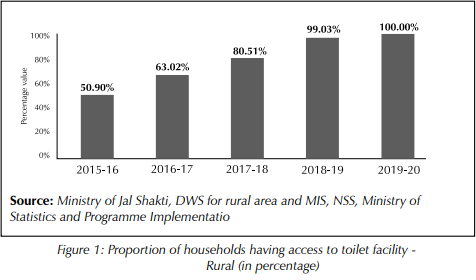
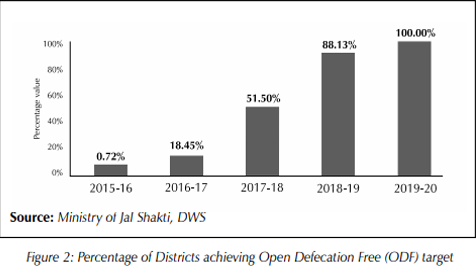
In January 2015, the General Assembly began the negotiation process on the post-2015 development agenda. The process culminated in the subsequent adoption of the 2030 Agenda for Sustainable Development, with 17 SDGs at its core, at the UN Sustainable Development Summit in September 2015.
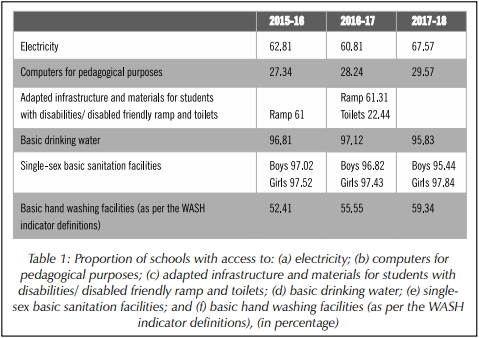
From the development-centric MDGs, SDGs moved into multidimensional development i.e. keeping in mind sustainability and equality, while achieving economic, social and environmental targets. MDGs got
Central Ministries/ Departments at the national level. In addition, the Ministry of Statistics and Programme Implementation (MoSPI) developed a National Indicator Framework (NIF). This originally comprises 306 national indictors, along with identified data sources and periodicity, following due consultation process with the concerned Ministries/ Departments, UN Agencies and other stakeholders.
At present, data flow from Official Statistical System and various data source Ministries/ Departments are involved in the process of providing data on SDGs at the national level. The MoSPI coordinates with these line Ministries for institutionalising the data flow for SDG indicators. The NIF is the backbone of SDG monitoring at the national level and provides appropriate direction to policy makers and the implementing agencies on various schemes and programmes. The states/ UTs are also involved in similar exercises at their levels, their objective being the localisation of SDGs.
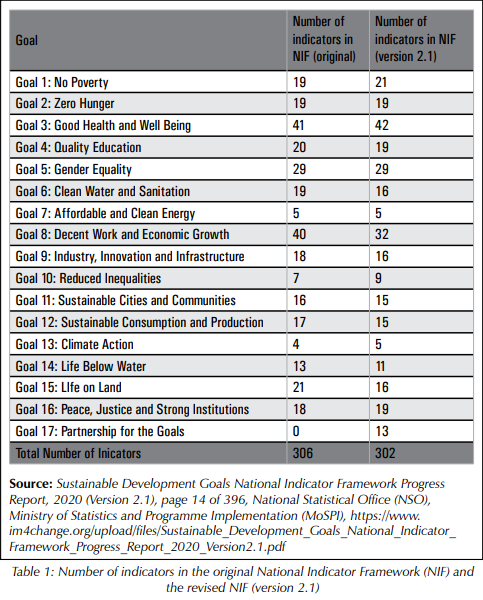
The goal-wise distribution of NIF (original as well as version 2.1, which is the latest revised version) is shown in the following In the executive summary of the ‘Sustainable Development Goals - National Indicator Framework Progress Report, 2020 (version 2.1),’ it has been mentioned that poverty is a multi-dimensional phenomenon. Poverty eradication in all its forms remains one of the greatest challenges before mankind. Extreme deprivation is not just about lack of wellbeing and opportunity, it is a question of survival too.
From the development-centric MDGs, SDGs moved into multidimensional development i.e. keeping in mind sustainability and equality, while achieving economic, social and environmental targets. MDGs got
Over time, eradication of poverty, education and food security have merged with other needs like an eco-friendly, peaceful and inclusive world.
the ball rolling and SDGs were aimed to take it a step further.
What was the motivation behind the MDGs and what kind of progress did they make before giving way to the SDGs?
Sustainable Development emerged as a concept in the World Charter for Nature (1982)
concerning the environment. Over 178 countries adopted Agenda 21, a comprehensive plan of action to build a global partnership for sustainable development to improve human lives and protect the environment, at the Earth Summit in Rio de Janeiro, Brazil in 1992.
MDGs came into being at the Millennium Summit in September 2000. The Summit led to the elaboration of the eight MDGs to reduce extreme poverty by 2015 in the Millennium Declaration, unanimously adopted by the UN member states in New York.
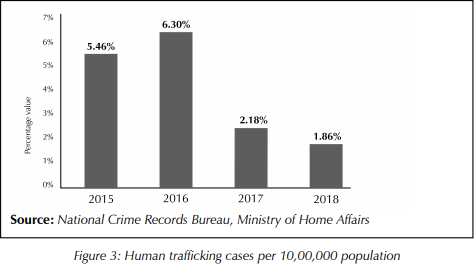
The MDG Gap Task Force was created in 2007 to monitor Millennium Development Goal 8, Global Partnership for Development, specifically its five core domains such as official development assistance (ODA), market access (trade), debt sustainability, access to affordable essential medicines and access to new technologies.
Meanwhile in 2002, the Johannesburg Declaration on Sustainable Development and the Plan of Implementation, adopted at the World Summit on Sustainable Development in South Africa, built further on Agenda 21 and the Millennium Declaration. It focussed on global partnerships, eradicating poverty and conservation of the environment.
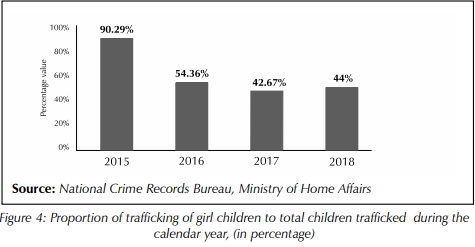
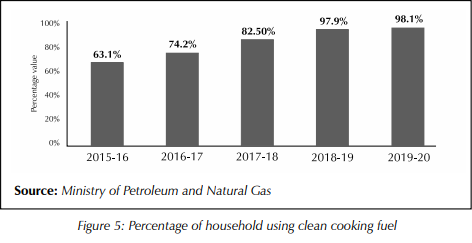
In 2015, the MDG Gap Task Force published a report that discussed some major lacunae like lack of monitoring, data to track real-time progress, quantitative time-bound targets, mismatch between targets set and indicators chosen to identify progress, etc. Additionally, there was a lack of individual country data to draw any national trends.
MDGs were largely successful, despite all the criticisms. They have played a role in uplifting the lives of billions across the world. But with time, global priorities have evolved. Certain basic needs have integrated. For instance, eradication of poverty
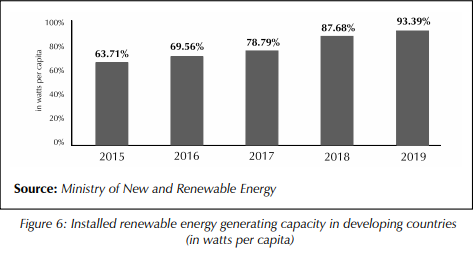
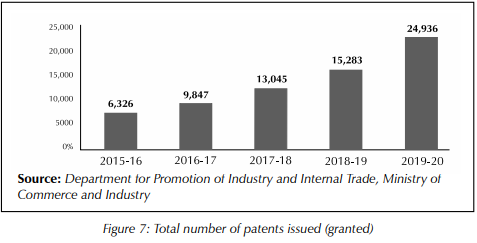
education and food security have merged with other needs like an eco-friendly, peaceful and inclusive world. Although all the member states signed the
MDGs, they followed them up with targets which aligned with the country’s own goals. Also, the MDGs were more centred towards the developing or the least developed nations.
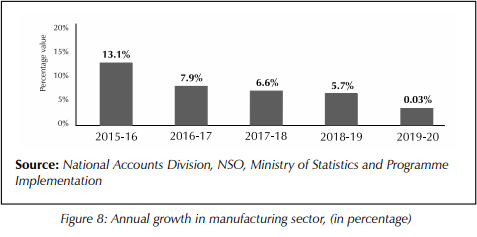
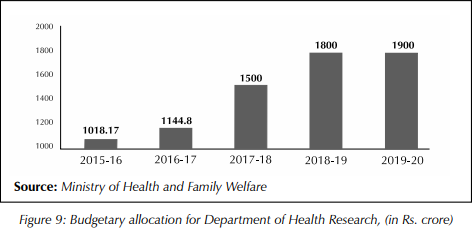
opposed to that, all countries have to work on the SDGs, owing to their ambitions for a better future.
It is also safe to say that the SDGs are much more comprehensive and aspirational than the MDGs. While the MDGs were built on the foundation of global development, the SDGs seek to realise it through sustainable means.
Which are the SDG sectors in which India has done better among the 17 goals?
To map the progress of the SDGs in India, the Niti Aayog has an eye on the centrally sponsored programmes of concerned Central Ministries/Departments. Further, the Ministry of Statistics and Programme Implementation (MoSPI) developed a National Indicator Framework (NIF) consisting of 306 national indicators (originally) along with identified data sources. This was drawn up following due consultation process with concerned national authorities, UN Agencies and other stakeholders. NIF provides appropriate direction to the policy makers and the implementing agencies of various schemes and programmes and monitors India’s SDG achievements.
As of March 2020, MoSPI published the National Indicator Framework Progress Report 2020 (version 2.0), the first formal progress report of India
on the SDGs. It later released the updated version 2.1. Information pertaining to the 17 SDGs and 169 associated targets were collected and analysed with the time series data from 2015-16 (baseline) to 2018-19 (latest available data).
It must be noted that 2020 marked the fifth anniversary of the adoption of the SDGs. Going by the statistics, India has progressed well on certain indicators, but there is a long way to go. At present, data flow from Official Statistical System and various data source Ministries/Departments are involved in the process of providing data on SDGs at the national level.
While in 2018 13 SDGs were covered with a composite score of 57, in 2019 16 SDGs were covered with a composite score of 60, and showed a marked improvement in India’s SDG achievements. Although there have been minor ups and downs over the last five years in several indicators, the biggest concern is the absence of information on certain fronts, despite the presence of a comprehensive system. In fact, several indicators reported that urban data was unavailable.
What has been India’s progress so far?
According to the data presented by MoSPI, 100% districts are open defecation free and 100% households have access to toilet facilities. Over 99% citizens have been covered as beneficiaries under the National Food Security Act, 2013. Additionally, over 99% households are electrified
as of 2019-20. The percentage of households using clean cooking fuel has increased to 98.10% in 2018-19 from 63.10% in 2015- 16. In 2019-20, over 95% wards have 100% door to door waste collection system as compared to 40.91% wards in 2015-16.
Gradual decrease can be observed in maternal and underfive mortality rates as well as in diseases such as tuberculosis and malaria. Even before the pandemic, the Ministry of Health and Family Welfare (MoHFW) almost doubled the funds allocated to the Department of Health Research in 2019- 20, as compared to 2015-16. Also, there’s been a hike in government spending in the health sector to GDP in 2018-19, compared to 2015-16.
India has also made headway in innovation and entrepreneurship. The total number of patents issued (granted) increased to 24,936 in 2019-20 from 6,326 in 2015-16 and the total number of start-ups recognised under Start-up India increased to 8,724 in 2017-18 from 503 in 2015- 16. In the last five years, the percentage of population with internet subscriptions has also doubly increased, from 26.98% in 2015-16 to 54.29% in 2019- 20.
The report also says that there has been an increase in the number of applications filed with institutions coming under the Right To Information Act from 11,65,217 in 2015-16 to
All the SDGs have targets dependent on the responsibilities of local and regional governments.
16,30,048 in 2018-19 as well as the RTI queries responded to. For instance, RTI queries responded to went up from 81.80% in 2015-16 to 82.10% in 2017-18.
While the representation of women in the Lok Sabha has increased by almost 3% from 2014 to 2019, India still lags behind in gender equality. The wages earned in regular/ salaried employment by female workers in July-September 2017 were Rs. 13,029 per month, which reduced to Rs. 12,851 per month in April-June 2019. Wages for male workers, on the other hand, has increased from Rs. 16,602 in July-September 2017 to Rs. 17,161 in April-June 2019.
MoSPI’s data paints a very optimistic future. However, the strange absence of urban data continues to rankle.
What are the new and emerging challenges in India regarding the SDGs?
Like any developing country, India’s biggest challenges are financial and technological resources to realise the SDGs. The fallouts of the pandemic, including the contraction in the Indian economy, unstable agrarian incomes and rising vulnerabilities of the working population, have stretched government resources. This poses to be a concern in the progress of sustainable development for all. In fact, lack of domestic data was a huge failing even in the realisation of the MDGs.
COVID-19 has also exposed India’s institutional deficiencies. The health and education sectors have been hit hard. Also, collection and analysis of reliable, disaggregated data require physical and financial capacity which is likely to have
been compromised due to the pandemic. These concerns need to be addressed proactively.
What can be the way forward towards a sustainable approach to human development in India?
SDGs are created with an emphasis on five Ps – People, Planet, Prosperity, Peace and Partnership. To realise the full potential of the SDGs, these five Ps need to function in coordination. For effective implementation of strategies at the local level, a certain level of decentralisation is the need of the hour through action from the bottom up. Although the SDGs are global, their successful achievement is largely dependent on our capacity to make them happen in remote corners of the country. Also, all the SDGs have targets dependent on the responsibilities of local and regional governments. Smaller regions can actually fit the global SDGs in their own particular context and facilitate the citizen’s understanding of how local action can accelerate their achievement.
As India is the only country to recognise state-level efforts and provide a national-level ranking to the states and UTs on their performance on the SDGs, perhaps the best practices could be culled out from the exercise. Subsequently, they may be prescribed to the other states/ UTs for ensuring the successful achievement of SDGs.
*Anshi Beohar is Legal Consultant (Research) at Common Cause
NEXT »



